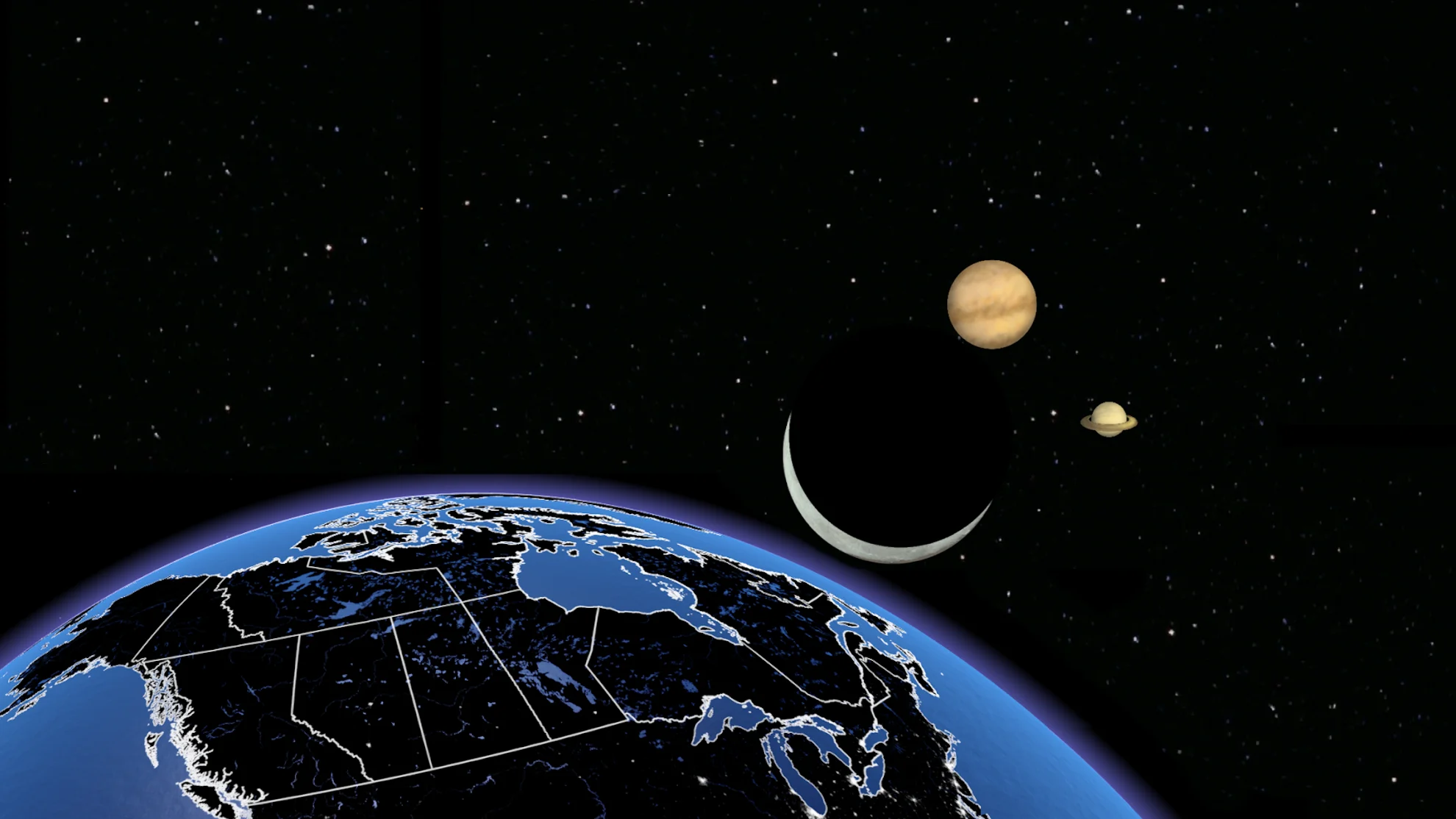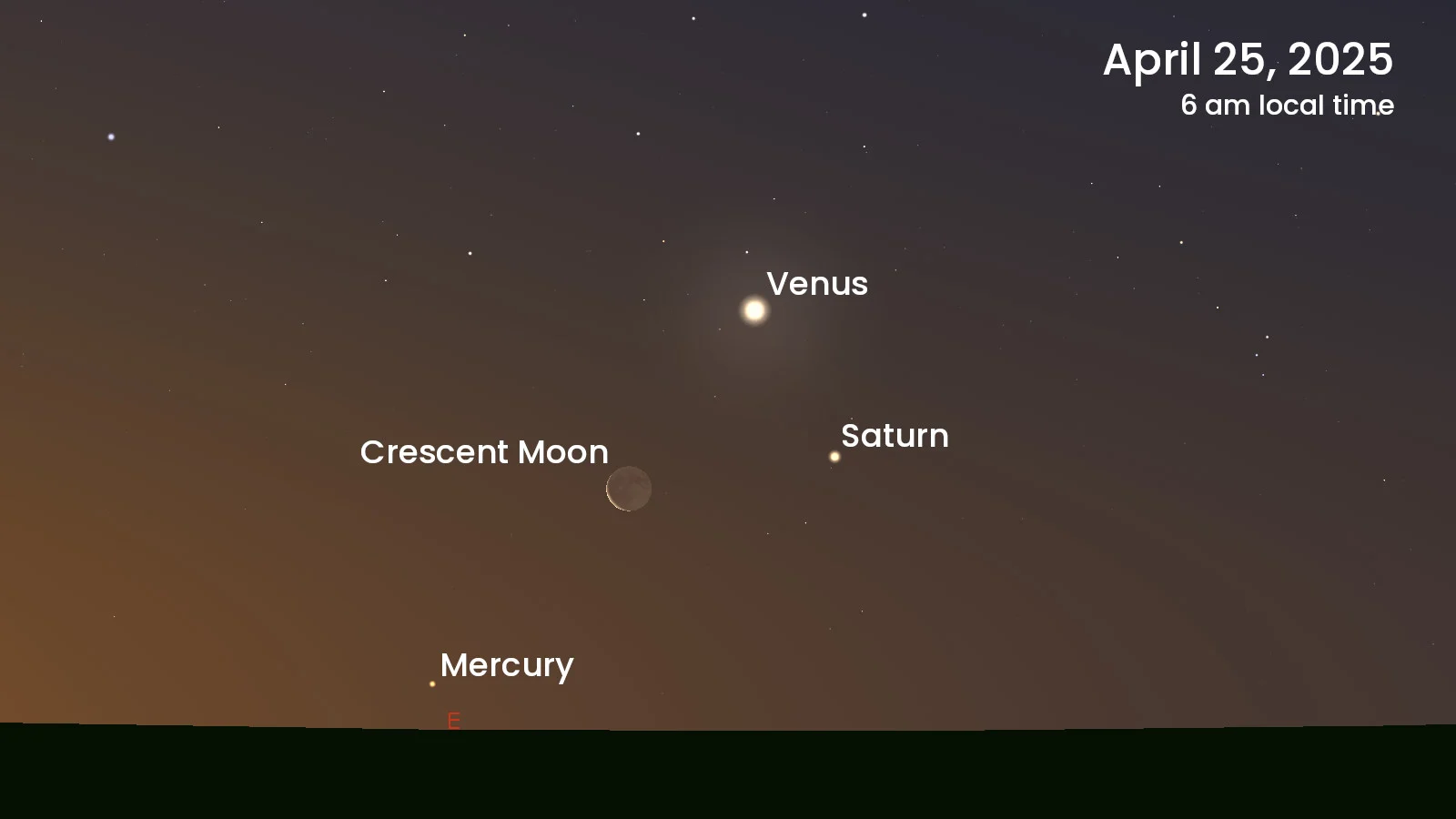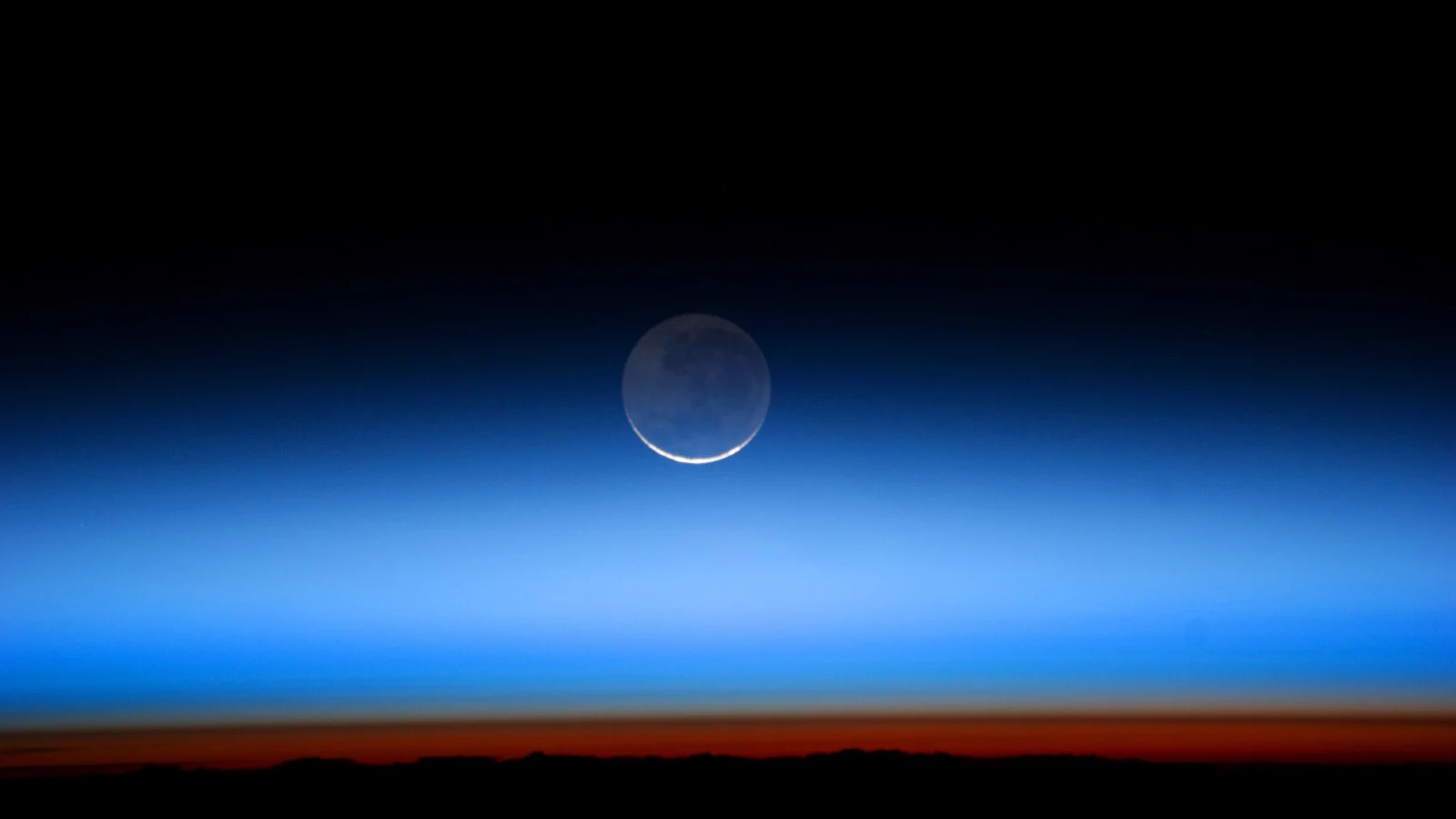
How to see a 'celestial smiley face' in Friday's predawn sky
A 'triple conjunction' will form up into a familiar sight in the sky later this week.
Rise and shine early on Friday, to see a celestial 'smiley face' in the eastern predawn sky.
While meteor showers and auroras can be elusive and sometimes challenging to observe, planetary conjunctions — especially when they are grouped together with the Moon — offer a way for anyone with clear skies to connect with the cosmos.
On the morning of Friday, April 25, we have a chance to experience one of these alignments, as long as the weather cooperates. In the hours before sunrise, two planets — Venus and Saturn — will be fairly close together near the eastern horizon, along with a very thin Cresent Moon. Together, this 'triple conjunction' will form a lop-sided emoji in the sky.

A simulated view of the 'celestial smiley' along the eastern horizon, at 6 a.m. local time on Friday, April 25, 2025. The Moon is shown at 2x its normal size here, which roughly represents how might it may look due to the Moon Illusion. (Stellarium)
Shortly after all three have risen, the planet Mercury will also appear above the horizon, trailing after them as they continue to reach higher into the sky.
Observers will need to time this very carefully, though!
Venus rises at around 5 a.m., local time, followed by Saturn and the Moon roughly half an hour later. From 5:30 through 5:45 is likely the best time to see them, as the trio will be framed by a darker sky, before the Sun's light begins to peak past the horizon.
After the full 'space emoji' becomes visible, we'll have less than an hour to see it before it vanishes, bit by bit, into morning twilight. Saturn will disappear first (along with Mercury), lost in the brightening sky, while Venus and the Moon may hang in there until the Sun is fully above the horizon.
Earthshine
Only a thin portion of the Moon will actually be lit by direct sunlight for this 'celestial smiley', completing the illusion. However, at this particular lunar phase, just two days prior to the New Moon, the 'dark' portion of its surface tends to be lit by a different source — the Earth. As sunlight shines onto the day side of our planet, roughly one-third of it is reflected back into space by Earth's surface and atmosphere.

Earthshine dimly illuminates the dark side of the Moon in this image taken from the International Space Station on July 31, 2011. (NASA Earth Observatory)
When that reflected sunlight is cast onto the Moon, it dimly illuminates any dark parts of it. This is known as Earthshine.
There is some Earthshine cast onto the Moon pretty much any time it is on the sunward side of our planet (between Last Quarter and First Quarter phases). It only becomes noticeable when the Moon is a thin crescent, though, either just before or just after the New Moon. That is when there is a large area of shadow on the Moon contrasted with a very thin crescent of moonlight, coupled with maximizing the amount of reflected sunlight received from Earth.
Although the amount of Earthshine is diminishing (likely due to climate change), it could still spoil the illusion of the emoji.
Even if that occurs, Earthshine itself is a beautiful sight to behold. So, as long as the weather cooperates, we should be in for a good show, regardless.
